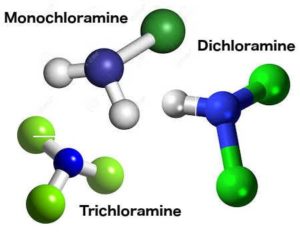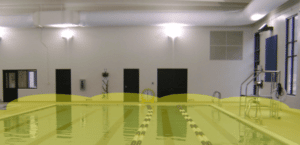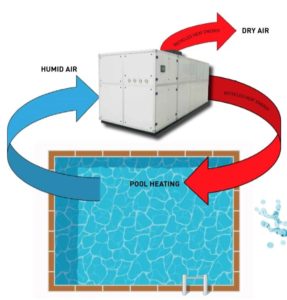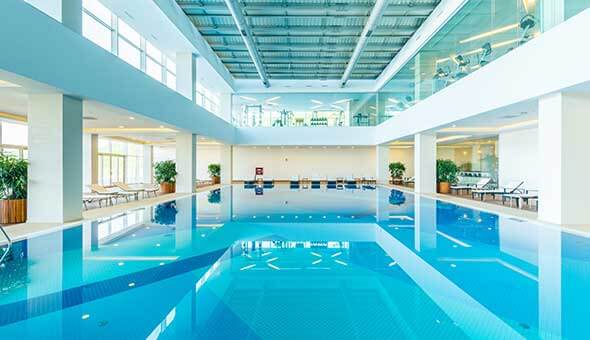Did you know your indoor pool air could be causing you and your building harm? Elevated humidity can cause issues such as;
• Poor health due to high chemical concentration in the air
• Occupants discomfort
• Mouldy and musty odours
• Condensation on cold surfaces
• Corrosion damage to your buildings structural components and fittings
• Higher operating costs
INDOOR POOL AIR QUALITY ISSUES
Indoor pools rooms have complex environments that need regular maintenance and upkeep. When all these factors are maintained and work together, your indoor pool room will provide a comfortable, healthy environment.
However if your pool room isn’t maintained properly, comfort, operating costs and maintenance can be greatly affected with serious and costly outcomes.
Without proper ventilation and dehumidification, indoor pools are prone to air quality issues because contaminated air is trapped indoors. Outdoor pools are not exposed to these types of air quality issues because the chemical by-products can easily escape into the atmosphere.

THE POOL SMELL IS NOT CHLORINE
Your pool water chemistry is an essential part of providing your patrons with a healthy and safe environment.
Both over and under-treated pools can result in unsanitary and unhealthy conditions. It can also affect your patrons comfort levels due to an offensive “chlorine” odour. This pool smell is in fact the combination of chlorine and organics found in the pool water.
WHAT IS CAUSING THE AIR QUALITY ISSUES?
Chlorine is used to keep your pool clean and hygienic and is an essential part of maintaining sanitary swimming water. The chlorine used to clean the pool attacks and destroys any organics found in the water including bacteria, dirt, sweat, body oils, hair, dead skin and urine. When the chlorine attacks the organics, the chemical reaction creates a by-product also known as chloramines.
There are three types of chloramines; monochloramine, dichloramines and trichloramines (also known as nitrogen trichloride).

Monochloramines and dichloramines are waterborne chloramines that become trichloramines during the chemical reaction process.
Once they become trichloramines they off-gas into the air and form a heavy layer of high chemical concentration that sits above the water level.
Without proper ventilation, this heavy layer of trichloramines sits just above the water level because its atomic weight is heavier than oxygen and it cannot escape the indoor pool room.

Waterborne and airborne chloramines are inevitable and with proper maintenance of the water chemistry, air quality and ventilation they can be controlled.
POTENTIAL HEALTH ISSUES
Without proper maintenance swimmers and swimming instructors are inhaling the worst air in the room.

Trichloramines are the bigger concern of the three chloramines, and are responsible for burning eyes, skin, noise and throat sensation that often occurs when swimming in indoor pools.
While there has been limited studies conducted in Australia, many health studies conducted worldwide suggest chloramines, in particular trichloramines contribute to a number of health concerns, such as:
• Eyes and nose irritation
• Headaches
• Skin irritation
• Suspected respiratory problems including wheezing, chest tightness, bronchitis and asthma
Chloramines are not only dangerous to your health, they can also cause damage to your building structure and components, in particular stainless steel and concrete. The aggressive corrosive chemicals present in the air and water can have severe affect if not managed correctly.
SUSCEPTIBLE STAINLESS-STEEL
Stainless steel is widely used around swimming pools however without proper ventilation and dehumidification, many common types of stainless steel are not suitable for indoor pool buildings environments due to their corrosive chemicals present in the air.
The stainless-steel grades that are known to be susceptible to chloramines are the common “18/8 grades including; 303, 304 and 316 and are frequently used for:
• Wall and ceiling panels
• Ductwork & grills
• Suspended ceilings
• Light fittings
• Air conditioning ducts
• Signage
These areas of the building are subject to tensile stress which can result in stress corrosion cracking (SCC). SCC is caused from the attack of corrosive chloramines present in the atmosphere conditions of indoor swimming pools.

STRESS CORROSION CRACKING
Stress corrosion cracking causes microscopic cracks in the stainless steel which are almost impossible to be seen by the naked eye. These cracks are extremely dangerous because there is very little warning leading up and can collapse at any time without forewarning.

The chloramines penetrate the pool building and are absorbed by condensation in the cooler parts of the building, for example stainless steel. This condensation typically occurs on structural components high up in the building, including ceiling, walls, light fittings.
When the condensation evaporates the chloramines concentrate, becoming more aggressive which can result in the stainless-steel corroding and potentially causing SCC.
This situation is more likely to occur in leisure centres and complexes where the pool is kept at relatively high temperatures.

PREVENTING & CONTROLLING CHLORAMINES
Your indoor swimming pool must be well designed, maintained and operated efficiently to prevent the spread of disease and to be comfortable and safe for swimming patrons.
It is just as important to prevent and control chloramines particularly in an indoor pool environment. Effective dehumidification and ventilation is an essential element in removing any air impurities and reduced condensation.
These technically engineered systems are designed to remove excess humidity from your indoor pool air and deliver ventilation to control pollutants caused from normal pool activity by removing and replacing the contaminated air. There are many advantages of using swimming pool dehumidification/ventilation such as:
• Control of air quality
• Safe, healthy and comfortable air conditions
• Maintain healthy, comfortable and safe humidity levels
• Remove pollutants from your indoor air
• Have control over your indoor temperature
• Prevent structural damage
• Reduce condensation
• Lower running costs
There are a number of techniques and technology available to help control chloramines in conjunction with your dehumidification/ventilation system. These include:
• Swimmer hygiene
• Super chlorination
• Stock dosing
• UV treatment
• Ozone
• Granulated activated carbon filters
• Zerolite
LOWER YOUR RUNNING COSTS
Energy operating costs are a huge expense associated with the operation of an indoor pool room. If not considered properly, installing a ventilation system can cause an unnecessary increase in your energy operating costs.
Ventilation systems are designed to replace the indoor air with fresh outdoor air. When used in an indoor pool room environment it will result in an excessive waste of energy with the need to heat the new outdoor air.
A multi-functional dehumidification system uses refrigeration technology to dehumidify the indoor pool room air and then recycles the waste energy to heat both the air and pool water – significantly reducing your operating costs.

EVOHEAT POOL DEHUMIDIFICATION SOLUTIONS
We are 100% Australian owned and operated company and are the industry specialists in pool and spa heating and cooling and dehumidification solutions. We have a large range of dehumidification systems to cater for domestic, commercial and multi-functional commercial requirements.
Our range is available in various sizes to suit most applications including domestic indoor pools to large commercial pools, school and universities natatoriums, athletic commercial pools, hotel leisure pools, aquatic centres and water parks.
For more information on our dehumidification solutions please click here or contact an EvoHeat Specialist today on 1300 859 933.
More info? Checkout our Pool Heater Reviews!






